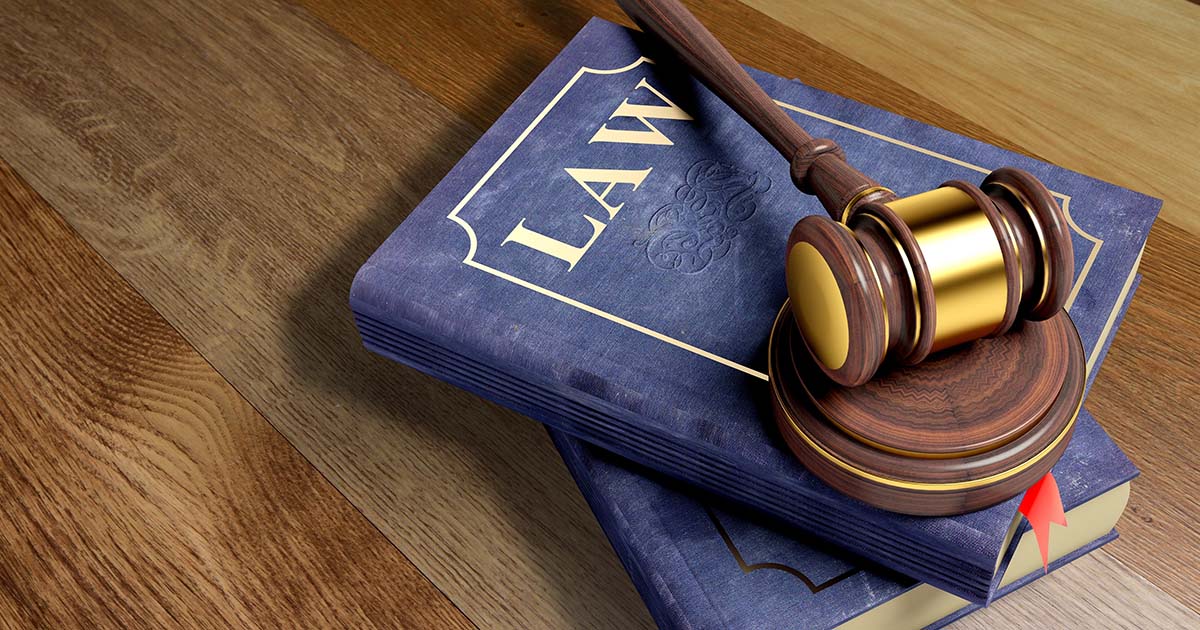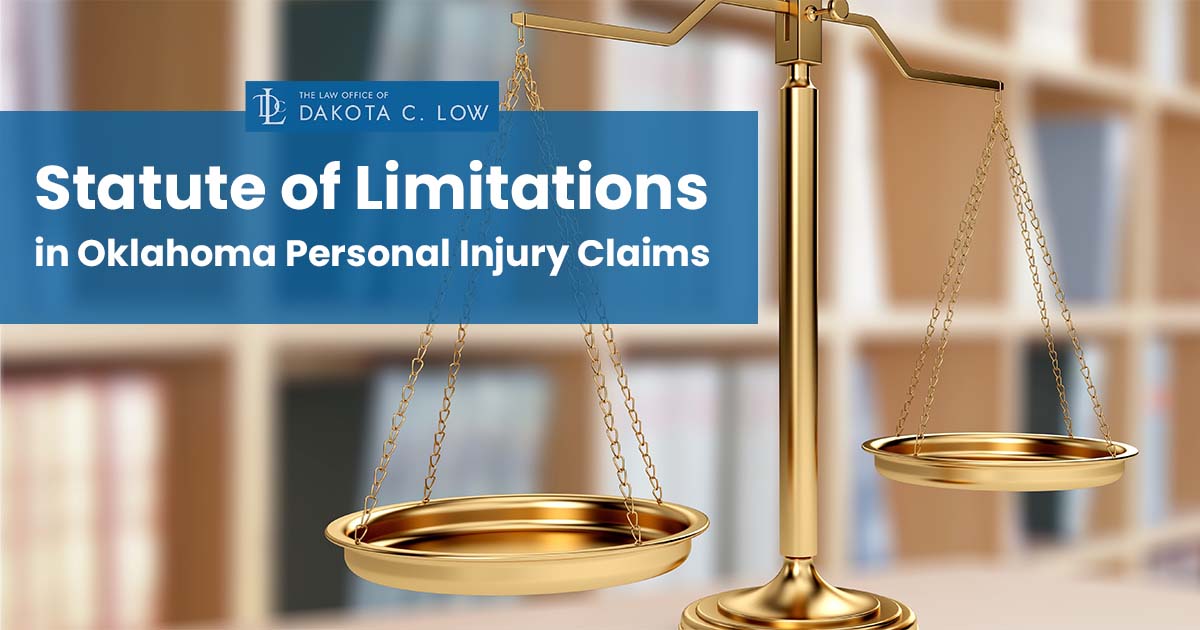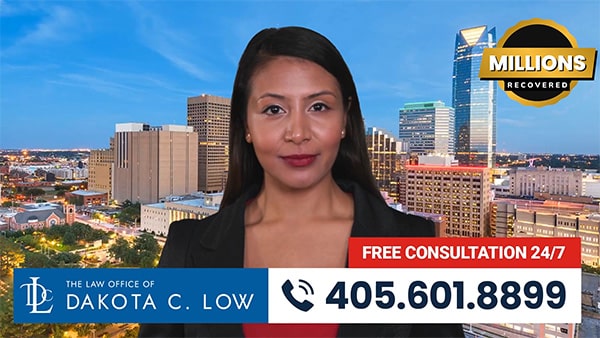Accidents are stressful since you are dealing with insurance companies as well as doctors and attempting to heal yourself. While you are healing from an accident, it is very difficult to advocate for yourself, negotiate with the insurance company, and prepare to file personal injury claims. If you unfortunately have an accident in Oklahoma, one thing you should know is the Statute of Limitations in Oklahoma Personal Injury Claims.
Although 95% of vehicle accident lawsuits are settled, it is critical to protect your rights in the event that your case goes to trial, so that you are taken seriously and receive a fair settlement offer.
What is the definition of a Statute of Limitations in Oklahoma?
A Statute of Limitations is a law that bars claims after a specified period. A statute establishing a time limit for suing in a civil case, based on the date when the claim accrued (as when the injury occurred or was discovered). Pertaining to the Statute of Limitations in Oklahoma, most personal injury cases have a two-year statute of limitations following the injury. An intentional tort, such as assault and battery for example, has a one-year statute of limitations when someone intentionally causes an injury.
Other exceptions include lawsuits against government bodies, notice of the claim must be lodged within a year of the incident.
The Period of the Statute of Limitations in Oklahoma
Any personal injury that happened as a result of an accident, as well as any property damage related to the accident, has a two-year statute of limitations (beginning from the date of the accident) in Oklahoma.
Please note that the obligation to submit a claim or accident to the insurance carrier is not subject to the statute of limitations in Oklahoma.
Despite the fact that you have two years to launch a civil lawsuit, most insurance companies need notice “as soon as reasonably practical” or “as soon as possible.” This implies you or your personal injury lawyer should notify the insurance company as soon as possible after an accident involving injury and property damage.
An injury may take days or weeks to manifest itself in some circumstances. Insurance firms are also known for prolonging your claim and avoiding a quick settlement.
It’s easy to see why the statute of limitations is so important to be aware of, given late-presenting injuries and a slow-moving insurance process. Hiring an experienced personal injury attorney as soon as possible after your car accident is critical in order to preserve your rights and file your lawsuit before the statute of limitations runs out.
Statute of Limitations in Oklahoma for Government Entities
If the car accident involves a government entity, the statute of limitations in Oklahoma is suspended, and a different set of processes must be followed.
It can be tough to tell if your accident was caused by a government agency. This emphasizes the importance of retaining legal counsel as soon as possible following a car accident.
Statute of Limitations in Oklahoma on Wrongful Death Claims
Wrongful death lawsuits resulting from an accident follow a different timeframe than personal injury claims.
A family member or a representative of the estate of a person who died as a result of an accident can file a wrongful death claim as soon as the person involved in the accident dies, according to Okla. Stat. tit. 12 § 1053.
The date of the individual’s death can be later than the date of the accident, therefore the clock does not begin to tick until the victim has died.
Family members or personal estate representatives have two years from the date of death to file a wrongful death claim, not the date of the accident.
This timeline, however, is only established in the context of filing a lawsuit. If a victim is killed or injured in an accident, the appropriate authorities (such as the city police or highway patrol) should be notified right away.
Statute of Limitations in Oklahoma Personal Injury Claims
When pursuing a personal injury claim, it is clear that there are numerous deadlines that must be followed and recalled. This is another reason why having an experienced personal injury lawyer on your side is critical.
If a settlement has not been reached within six months of the date of the accident and the damage is $300 or more, a report must be submitted with the Oklahoma Department of Public Safety, according to an important statute (Okla. Stat. 47 tit. 10-108).
If a settlement is reached during this time, the settlement summary of terms must be filed with the department as soon as possible after the settlement is completed.
A Free Consultation With a Personal Injury Lawyer in Oklahoma Is Available
In the event that you are harmed, you should consult with an attorney as quickly as possible to defend your rights, protect yourself from insurance companies, and secure a reasonable payment.
An attorney can assist you in gathering information, informing you of your statute of limitations in Oklahoma deadline, and advising you on what compensation you may be entitled to in a personal injury settlement.
Hiring an experienced and competent personal injury attorney helps guarantee that the process is handled professionally and that your interests are effectively represented.
When you need to go through the Oklahoma personal injury civil process, contact an experienced Oklahoma personal injury attorney. Call 405.601.8899 today for a free, confidential consultation.
Personal Injury Lawsuits in Oklahoma Have Time Limits

Time limits, known as “statutes of limitations,” exist in Oklahoma law for coming to court and initiating a lawsuit over some form of harm. Various deadlines apply to various types of cases. In most situations, you have two years from the date of the underlying occurrence to initiate a personal injury lawsuit in Oklahoma’s civil court system.
It’s critical to maintain track of the two-year deadline. If you miss the deadline and submit your lawsuit more than two years later, the court may dismiss your case without hearing it.
The full wording of personal injury statute of limitations in Oklahoma can be found in Oklahoma Staute Title 12 Sec. 95.
In Oklahoma injury cases, there is a theory of shared fault.
When an injured individual and the one that caused the accident or injury are both partially to blame for what transpired, this is known as “shared fault.” In circumstances where fault is shared, Oklahoma uses a “modified comparative fault” rule. Under the modified comparative fault rule, an injured party can receive a lower amount of damages if his or her share of the fault is less than 50%, but no damages if their share of the fault is more than 50%.
Consider the scenario in which you are driving and another vehicle pulls out in front of you causing an accident and you are injured. Because you were going 5 miles an hour over the speed limit at the time of the accident, you arrived faster than the other driver anticipated. You are found to be 10% responsibile for the collision in court, while the other driver is 90% at fault. Your total losses are $10,000.
Because you share less than 50% of the blame in this case, Oklahoma’s modified comparative fault rule applies, reducing your damages by the percentage of culpability you share. This means that your $10,000 prize will be reduced by $1,000 (10% of $10,000), leaving you with $9,000. You would not be able to recover damages if you were deemed to be 50% or more at fault.
When a shared-fault case comes to trial in Oklahoma, the modified comparative fault rule is required by law. During talks, an insurance adjuster may bring up the issue of shared fault.
Damage Caps
In 2019, The Oklahoma Supreme Court ruled that the Oklahoma legislature’s attempt to “cap” or restrict the amount of compensation that an injured person can collect for their losses in personal injury lawsuits was unconstitutional. In personal injury claims, the Oklahoma legislature capped non-economic damages, which includes compensation for “pain and suffering.”
Oklahoma’s legislature set a limit of $350,000 for non-economic damages in civil injury cases. Economic damages, such as those intended to compensate for the expense of medical care and lost wages, are not affected by the cap. However, through the hard work of Oklahoma personal injury attorneys like Dakota Low that law was ruled unconstitutional and over turned by the Oklahoma Supreme Court.
Dog Bite/Attack Cases: “Strict” Liability
Many laws exempt dog owners from liability (to some extent) the first time their dog injures someone provided they had no cause to believe the dog was dangerous. This is commonly referred to as the “one bite” rule. However, in Oklahoma, a special provision (Okla. Stat. tit. 4 § 42.1) renders the owner “strictly liable,” meaning that the dog owner is responsible for any physical injury caused by his or her dog, regardless of the animal’s previous behavior. The statute reads as follows:
“The owner or owners of any dog shall be liable for damages in the full amount of any damages experienced when his dog attacks or injures any person in or on a place where he has a lawful right to be without provocation.”
Injuries in which the government is involved
If your injury case involves the carelessness of an Oklahoma state-level government, city, or county employee or agency, a distinct set of standards applies. For example, if your case includes the government’s potential liability, you only have one year from the date of the harm to file a written claim. Claims against a government entity can be highly complex. If you believe you have a claim against a government entity you should contact The Law Office of Dakota Low immediately.
References – Learn more about Statute of Limitations in Oklahoma Personal Injury Claims
You may want to read the full text of Title 12: Civil Procedure in the Oklahoma Code to discover more about Oklahoma laws that pertain to personal injury lawsuits including statute of limitations in Oklahoma.
Contact Dakota Low today for a free case review and consultation at 405.601.8899 or use our contact form.









